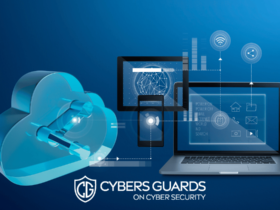Information Assurance vs Cybersecurity- Most definitions of information assurance and cybersecurity conflate the two phrases. It’s gotten to the point where everyone thinks they’re saying the same thing. Many individuals mistakenly believe that the two concepts are interchangeable.
However, as this essay explains, there are basic parallels and contrasts between information assurance and cybersecurity.
What is Information Assurance?
The practise of ensuring that information systems work as expected and that unwanted access is prevented is known as information assurance. Furthermore, legal users have access to the system. The word refers to the technological and managerial safeguards put in place to assure the confidentiality, integrity, control, availability, and utility of data and computer systems.
Information assurance is defined by five pillars, according to Techopedia: information integrity, availability, authentication, secrecy, and nonrepudiation. These five system attributes are maintained by information assurance processes, which protect computer systems.
Information assurance has a much longer history than cybersecurity, allowing it a larger breadth of application. According to an article on Lewis University’s website, information assurance and risk management are inextricably intertwined. A company’s information assets, as well as the systems and applications that store, process, and convey them, are identified.
Following that, information assurance professionals assess the information assets’ vulnerability to cyber threats and attacks. These attacks result in a loss of confidentiality, integrity, and availability due to disclosure, alteration, or disruption. After that, the information assurance process calculates the impact of unintended events on the assets. It instructs a company on how to allocate money, staff, and best practises to safeguard information assets.
In terms of information assurance, putting in place data protection procedures is just the beginning. Various assessment frameworks and security audits are required as part of the procedure. This enables a company to determine how effective its controls are at mitigating risk. Planning, assessment, information risk management, governance, and the implementation of cybersecurity measures to secure information assets are all part of robust information assurance.
What is Cybersecurity?
Ready.gov, a website run by the US Federal Emergency Management Agency, describes cybersecurity as the process of preventing, detecting, and responding to security breaches and cyber attacks. Such attacks can have far-reaching consequences for individuals, companies, communities, and the country as a whole.
Individuals and organisations build and develop diverse technologies, methods, and practises to secure information assets, which are referred to as cybersecurity. Networks, devices, programmes, services, and data are all examples of assets that need to be protected from assaults, damage, or unwanted access.
Enterprises study and determine the risk levels of potential threats to computer networks in cybersecurity. The important work of a cybersecurity specialist is to protect information assets from cyber threats.
An successful cybersecurity plan, according to Digital Guardian, includes features such as network security to protect the network from attacks and data security to secure critical information from unauthorised access. Application security, which regularly updates and tests apps for safety, and endpoint security, which protects system and data access via devices, are two more cybersecurity components.
Identity management is also necessary for determining the level of access that people and entities have within a company. Database and infrastructure security, cloud security, mobile security, information system restoration, business continuity planning, and physical security are all aspects of cybersecurity.
To put it another way, cybersecurity experts are primarily concerned with defending the infrastructure of computer systems, such as computers, networks, and communications, against cyber attacks, and are only secondarily concerned with protecting information and data within the cyber realm. If this is the case, cybersecurity does not cover the protection of information assets outside of the cyber realm, which is covered by information assurance.
What is the Relationship Between Cybersecurity and Information Assurance?
Information assurance and cybersecurity, according to a University of San Diego article, entail risk management, maintaining, and preserving high-tech information systems used across various industries to store, process, and transfer critical data.
Information assurance and cybersecurity are primarily concerned with the value of data. In this scenario, the two fields rank distinct types of information, such as physical and digital data, according to their importance. More security and assurance layers are applied to more critical data than to less critical data.
Aside from the aforementioned definitions, cybersecurity can be thought of as a subset of information assurance, which includes higher-level concepts such as strategy, law, policy, risk management, and training. Information assurance refers to a broader strategic undertaking that encompasses a variety of procedures, including cybersecurity.
Cybersecurity measures protect all information and functional computer systems, including networks, online services, critical infrastructure, and IoT devices, and help a business accomplish its information assurance goals.
To eliminate threats and maintain desired service levels, information assurance and cybersecurity use technologies, methods, and tactics like as firewalls, user education, penetration testing, endpoint protection tools, and other high-tech systems.
In terms of employment credentials, there is also some crossover between the two professions. Information assurance and cybersecurity both necessitate a thorough awareness of the security concerns and technology involved in protecting information assets. Cybersecurity controls are often included in the responsibilities of information assurance managers.
Cybersecurity vs. Information Assurance
Every now and then, someone will mention the term information assurance, which has become synonymous with cybersecurity because to its usage by the government. However, there are significant differences between the two names.
What is the difference between information assurance and cybersecurity?
Prior to the digital age, there was a field known as information assurance. Cybersecurity, on the other hand, is a forward-thinking field that keeps up with the fast-paced technological landscape and the ever-changing danger scenario.
Physical (hard drive data and personal computers) and digital information assets are the subject of information assurance processes. Cybersecurity, on the other hand, focuses on preventing and controlling threats to digital information assets.
Information assurance is more strategic in nature, involving policy formulation and implementation to ensure the security of information assets. Cybersecurity, on the other hand, deals with the actual reality of putting in place security policies and technologies to keep data safe.
Strong technological skills and a cybersecurity degree course are required for a cybersecurity career. A master’s degree or bachelor’s degree in information technology, computer science, or computer engineering are among the other degrees available to information security professionals and chief security officers. A computer network architect could also be a cybersecurity expert. Many of the same academic degrees as cybersecurity are usually found in information assurance. It could also include an information assurance degree with courses in data analysis, cryptography, and data security.
By establishing, updating, and maintaining rules and procedures that secure valuable assets, an information assurance expert protects physical data, digital information, and electronic hardware. Cybersecurity professionals, managers, and an information security analyst, on the other hand, place a premium on defeating cyber adversaries who target digital information and information systems.
The terms employed in the IT industry must accurately reflect what we perform. By contrasting and distinguishing the terms information assurance and cybersecurity, we can avoid inconsistencies, inefficiencies, expectations violations, and gaps in the measures, processes, and technologies we implement and maintain to ensure government agencies and organisations meet the expectations and goals of the two fields.
Individuals can better select educational and career routes that best match their passion, talents, interests, and goals by recognising the similarities and contrasts between the two fields.
Finally, defending a company and its customers does not require choosing between information assurance and cybersecurity. Credit card transactions, secret data, and interactions by email, phone, and letter are all examples of sensitive and confidential information that businesses deal with. As a result, information assurance is a must, and cybersecurity is a subset of this approach.










FIND US ON SOCIALS